Wines to drink
25 May 2010
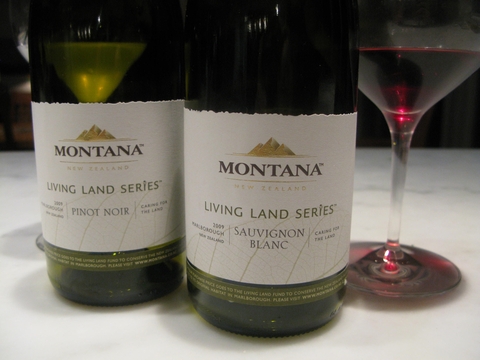
After the torrential rain that has swept the country I know for sure that I am safe saying New Zealand is a clean and very green country this week. The rain has washed everything squeaky clean and pastures, no longer craving to satisfy their thirst, are sprouting bright green shoots in the remaining warmth before the true onset of winter.
But, as we are all aware, it is not enough to glide along, singing the same old songs about sustainability, sound ecology and pristine environment. We have to make a larger collective effort to ensure guardianship of our land for the future and support individual and corporate environmental initiatives. Most wine companies are quite responsible, with 85% of the country’s producing grape area managed by wineries committed to the Sustainable New Zealand Winegrowing programme.
But I’m full of admiration for wineries that go a step further instigating a programme that engages the wine drinker with the vineyard, and makes a contribution to saving, protecting or restoring our lovely environment. The first I noticed were an early environmental label of Corbans (remember them?), Grove Mill’s wetlands project, and Atarangi’s ‘Crimson’ Pinot Noir that supported saving pohutukawas.
And now one of the biggies, Montana, is celebrating its commitment to protecting the natural environment with their Living Land Series. I tasted the Living Land Sauvignon Blanc and the Pinot Noir on Saturday and thought these wines were both imminently drinkable and quite expressive of the Marborough style we expect from these two varietals. One dollar from the sale of each bottle will be donated to support a range of environmental initiatives. Presently it is to save the threatened New Zealand falcon. I must confess, I am terrified of birds but apparently falcons are desired workhorses of the vineyard, deterring other birds that feed on grapes. So as a threatened species, I guess they are definitely worth conserving. I hope Montana’s Living Land Series makes many such differences.
Print • ∞ Permalink • Comments
19 May 2010
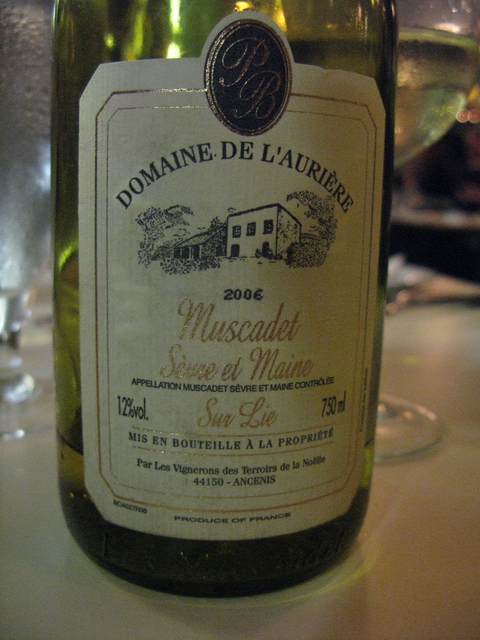
I was delighted when Belinda Jackson, a wine consultant from Marlborough, was paired with me on stage at the Wellington Food Show this past weekend to match my food with wines. Great, as a glass or two of wine is an important part of any meal I eat. And Belinda thinks as I do, that the wine that matches your food best is the wine you really want to drink. (Don’t tell that to my husband as that would mean only big Shiraz and Chardonnays forever on our table.) That said, there are wines that will certainly enhance food better than others. It is really all about weight. To explain that; match light food with light wines, and serve heavier style wines with more robust dishes. We only had 45 minutes, three dishes to cook from scratch, and three wines to talk about. But we managed brilliantly, and Belinda was able to catch her plane home 45 minutes later!
First up was my fennel, lemon and olive tart. Belinda had chosen the Te Whare Ra Pinot Gris 2009, grown and made in Marlborough. I can shy away from Pinot Gris as you never quite know what you might get. Some are oily, some are overly sweet but the best are aromatic, slightly dry and have a wonderful mouth filling appeal that lasts and lasts. The Te Whare Ra team are passionate about white aromatic wines and this was lovely. A wine that stood out from the crowd and could be drunk as an aperitif, or to accompany my tart perfectly. As it did.
Next up, I showcased pork medallions on a warm salad of spicy chickpeas, beetroot and spinach with a horseradish dressing. As Belinda said, a very complex dish with lots of competing flavours. She stepped up with Passage Rock Syrah 2008 from Waiheke Island. This wine, year after year, deservedly is favourably noticed by the wine writers, and wins medals and awards in many competitions. It is dark, spicy and totally engaged with the pork. I might have to purchase some for the husband.
To finish I had rounded up some of the artisan products from the show, and threw together two light, fruity desserts with fresh seasonal Doyenne du Comice pears. The first featured artisan honey and creamy yogurt, and the second included Lemon Z ice cream and limoncello. The Forrest Botrytised Riesling 2009 was light, very fruity, not cloying at all and the sort of wine that you could easily drink without overpowering the delicate dessert. Good work, Belinda, and please come and choose wine for my food anytime. (All recipes are on the recipe page www.laurainejacobs.co.nz/recipes )
And if the wine and food matching on stage wasn’t enough, we found the most scintillating wine to match our seafood at Mark Limacher’s new Ortega Fish Shack when we ate there in Wellington on Friday night. We ordered oysters, fish cakes, squid and snapper and accompanied these fishy treats with a bottle of Domaine de l’Aurière Muscadet 2006 from Sevres et Main in France’s Loire region. It was crisp with nice acidity and lovely gentle flavours. Just right for seafood and a nice change for our kiwi palates!
Print • ∞ Permalink • Comments
6 May 2010
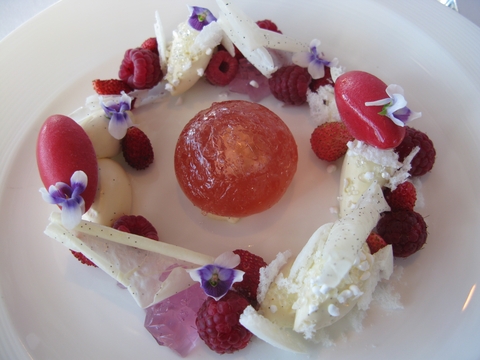
Yesterday at Quay, a Sydney restaurant that sits smack-bang opposite the Opera House on Circular Quay, I enjoyed one of the world’s prettiest desserts. Quay was recently named number 27 on the list of the world’s San Pellegrino Top 50. The service, the extensive excellent wine list, and chef Peter Gilmore’s meticulously crafted food combine with one of the most stunning views a city could offer to reinforce the judges’ choice of catapulting it into international fame forever.
The ‘pretty’ dessert (pic above) was a plate of delicate fraises des bois and fresh raspberries with cream, jellies, sorbets, lovely crunchy bits and tiny violets. And with that I had a glass of perfectly matched wine. Bugey Cerdon, a sparkly demi-sec (slightly sweet) wine from a small producer in the Jura mountain region of Eastern France was crisp, fruity with only 8% alcohol. Made from Gamay and Poulsard (a local variety) grapes, it added a little bit of lift without drowning out the delicacy of the dessert. And with a gentle rose pink colour it totally was in tune.
The combination made me think about so-called dessert wines. When it comes to the end of a fine meal, I want something sweet, but the cloying nature of many ‘stickies’ as they are often called in NZ and Oz, means that the flavours in puddings are completely upstaged. So most often I will give up on the sweet course and have a sweet drink instead. My ideal dessert wine is the wonderful Encore from Pegasus Bay, a late harvest Riesling that just seems to last forever. Their Finale, made from late harvested Chardonnay grapes is equally splendid. I also love the exceptional Gewurztraminer from Dry River, the Halo from Sacred Hill, and on a lesser budget, Saints Gisborne late harvest Semillon is superb.
But the gentle fizz and restrained sweetness of the Bugey Cerdon would take first prize for me, but as I am back here in NZ, I think it may be a long search to find another bottle of such a gorgeous wine.
Print • ∞ Permalink • Comments
25 April 2010
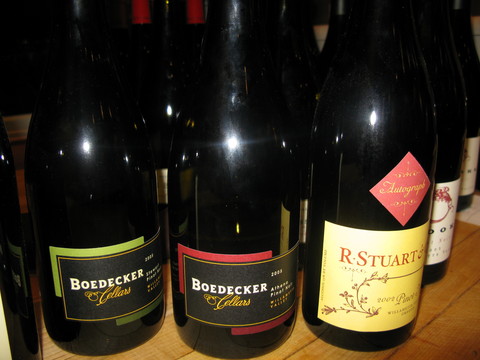
If there's anywhere in the world a New Zealand palate could be happier than in Oregon I would be surprised. The climate is conducive for growing Pinot. Pinot Gris, Pinot Blanc and, of course stunning Pinot Noir which is the predominant varietal. The state has similarities to New Zealand. Grass grows prolifically in the moist climate and almost everything grows throughout the spring, summer and autumn.
I toured the Willamette, and tasted some stunning Pinot Noir and Chardonnay at the boutique bio-dynamic Brick House, a mouth filling delicate Pinot Gris at the state of the art Penner Ash winery, and then enjoyed Eyrie Rose of Pinot Noir over a fabulous Italian lunch at Nick's diner in McMinville. All lovely wines.
But the highlight was the selection of outstanding Pinot Noirs served at a Wild game dinner at the Heathman Hotel. The wines came from the library stock of the International Pinot Noir Celebration
(IPNC) which is held every year in July. I attended this event in 1997 and thought at that time that this could possibly be the BEST wine event anywhere in the world. (Apologies Toast Martinborough, but it is the best way a Pinot Lover could ever spend three days.) The wines we drank with our game dinner last night were sensational.
This date for year's IPNC is July 23-25 and one of the keynote wine speakers is our very own Lynette Hudson from Pegasus Bay in Waipara. I am sure she will wow the locals with her wine! Worth a trip across the Pacific I believe. Especially to taste Oregon wine.
Print • ∞ Permalink • Comments
20 April 2010
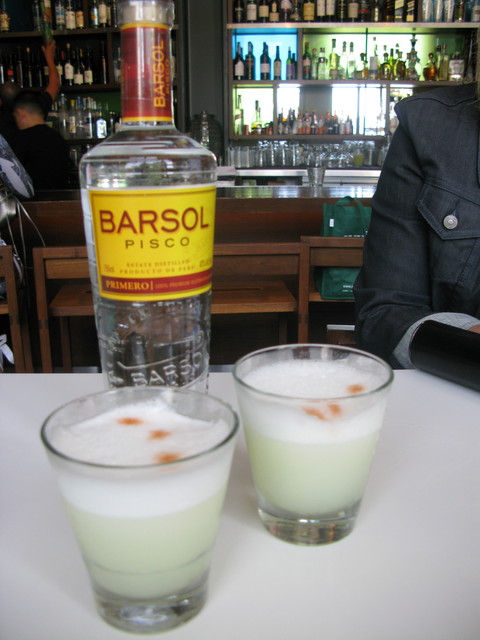
I have escaped from San Francisco, just in time to save my liver. Despite the proximity to Napa, Sonoma and hundreds of other wine growing areas that bound the Bay area, the locals are into cocktails.
We loved the Pisco Sour, traditional Comopolitans, innovative spicy mixes with vodka and gin, and several other amazing concoctions the bar men shook for us. Judith Tabron called this breakfast as she claimed the egg white in the drinnk was adequate qualification! And when we ordered cocktails they were there in front of us before we could blink.
Not so with the wine. It seemed to take an age to arrive. In one restaurant, the bottle of wine that accompanied our dinner was the only wine I could spot being consumed in the entire restaurant. But there are some goodies. Californian pinots are dark and broody, chardonnay is oaky and huge on the whole (isn't this where ABC started?), and most wine lists we saw listed a stunning selection of regional Italian wines predominantly. Spotted on one wine list; Pyramid Valley Sauvignon Blanc, with the symbol for bio-dynamic alongside. Hurray for New Zealand.
Print • ∞ Permalink • Comments
14 April 2010
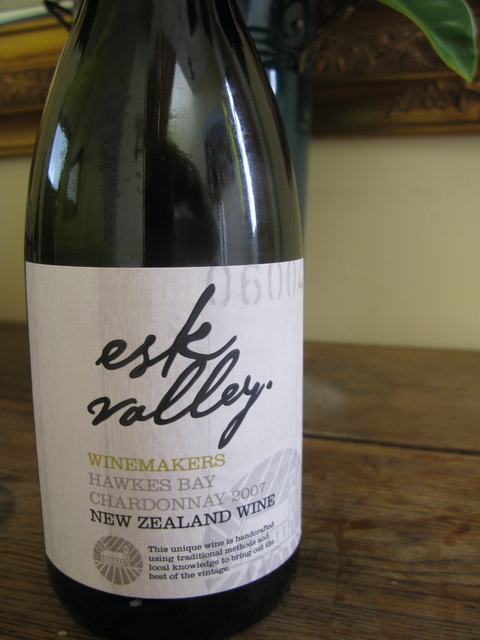
Yesterday we finished the photos for our Vegetable Cook Book, which is to be published later this year. It’s been an exciting project and I have loved working with two other talented cooks, Ginny Grant and Kathy Paterson. We finished up with the Winter section and it was appropriate on the first cold day after our Indian summer.
And last night we sat around the table and enjoyed the fruits of the shoot for dinner. We had been anxious to try the Esk Valley Winemakers Chardonnay 2007 since a half dozen had arrived in a smart wooden box last week. And we had platefuls of Brussels Sprouts cooked two ways, a leek and feta tart, a rice and coconut salad with red pepper and spinach, and a spiced parsnip soup. All leftovers from the photos, and all to be included in our book.
The wine came straight from the fridge and was too cold so we sipped our soup and cuddled the wine to warm it up. After about 15 minutes it proved to be elegant, filled with lovely aromas and flavours, and went perfectly with the Brussels Sprouts. I was amazed. But then the winemaker Gordon Russell, who heads up the winery in Hawke’s Bay, is a super cook and loves his food so I don’t think he would ever make a wine that didn’t complement food. I learned an interesting lesson last night. Superbly made Chardonnay like this makes all veggies taste even better. Even if the back label says it should be drunk with white meat or seafood.
Print • ∞ Permalink • Comments
14 April 2010
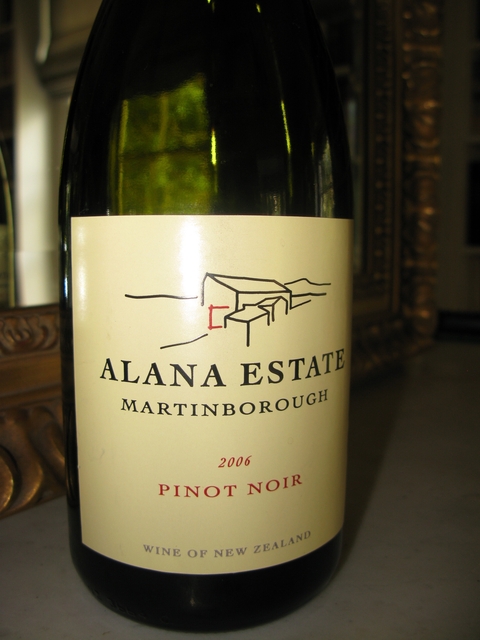
I have been to the tiny wine district of Martinborough many times. It’s famous for an extraordinary event held each year, Toast Martinborough. Possibly the best wine event on the New Zealand calendar. But it is also just as famous for its Pinot Noir wines.
Long before the rush for gold in Central Otago and the planting of every possible slope and patch of land there as far as the eye can see, a few pioneers chanced their arm with plantings of Pinot Noir on a terrace in the Wairarapa region in the town of Martinborough thatwas not much more than a dot on the map. The early winemakers there in 1980, Neil McCallum at Dry River, Clive Paton at Atarangi, along with the late Stan Chifney, followed by Larry McKenna at Martinborough Vineyard in 1986, knew what they were onto. And thirty years later the Pinot Noirs of this region are still my preferred red if I get to choose.
We opened several bottles of wine with a group of friends the other night and for me, the star of the night was from a vineyard that was established in the district just over ten years ago. The Alana Estate Martinborough Pinot Noir 2006 had everything I expected to find. Dark and broody in colour, complex in aroma with an almost violet fragrance, and when sipped, proved to be truly delicious. A real Martinborough treat to seek out.
Print • ∞ Permalink • Comments
7 April 2010
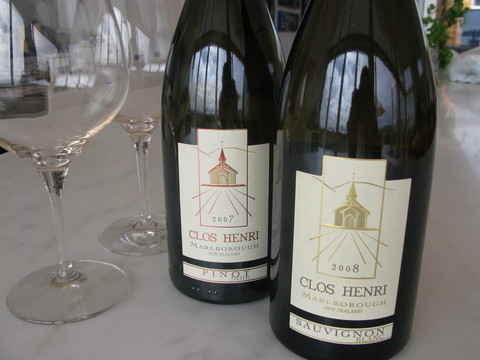
If you have ever been to a winery and tasted the wines in their natural setting; surrounded by the vineyard and in the company of the maestros who produced the wine, you will know what I mean when I say you will never really know a wine until you have the full experience. Last night I brought out a bottle of red to match our lamb. I had been saving it for a while; Clos Henri Pinot Noir 2006. It was made in a boutique winery in the Wairau Valley in the Marlborough region of New Zealand.
The Bourgeois family, have two wineries, one old world, the other new world. The Henri Bourgeois winery and cellars dominate the tiny village of Chavignol (pop 130) in Sancerre, France, and this family has been a leader in taking Sauvignon Blanc to the world. The patriarch, Jean Marie Bourgeois, is a man of vision and passion, who scoured the world’s premium wine regions for a site to set up an extension of the family business. He chose a remarkable site in New Zealand with views to the ranges beyond the Wairau Valley. There he planted Sauvignon Blanc and Pinot Noir vines (the wines Henri Bourgeois is famed for in France) on the hillside and valley floor, and now exports fine New Zealand and French wines around the world. He named the family winery in NZ Clos Henri. A small historic chapel was moved onto the site to serve as the cellar door. The first wines were produced in 2003.
I have been to the wineries in both countries, and enjoyed eating with the family in Sancerre and Marlborough. Knowing this family well, I feel the wine is like meeting with a familiar friend when I drink it. The Clos Henri Pinot Noir had rather spicy cherry-like aromas and proved to be a really delicious match with my roasted lamb. I sipped it and was in heaven. But I also love the Clos Henri Sauvignon Blanc, which is made in quite a complex style, with lots of fruity favours and is the sort of refreshing Sauvignon Blanc that will probably be even better when it is a year or two older. I will be seeking out a few more bottles for my cellar.
Print • ∞ Permalink • Comments
29 March 2010
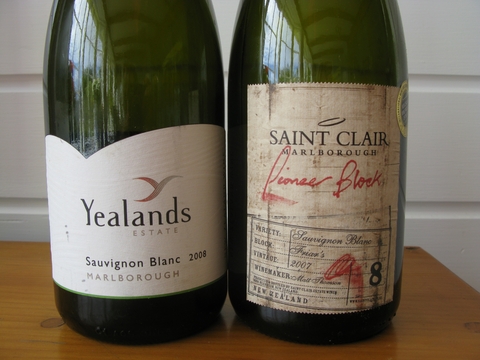
I choose Sauvignon Blanc when I am tired and need a wine to perk me up. The other night we had a couple of friends in for a drink and, after a day on the golf course, ‘Savvy’ was just what I needed. So much so that we drank our way through two bottles.
New Zealand is known for its clean green image. Most people think that idea derives from all the green pastures, the pristine waters and the icy clear mountains. But as a savvy drinker I know better. Our world famous Sauvignon Blancs are exactly what has painted this green impression for us. Grassy, herbal aromas, a freshness that leaps from every bottle, and clean mineral tastes, has helped tell the world of our commitment to a better planet.
The first bottle we tasted was Yealands Estate Marlborough Sauvignon Blanc 2008. It delivers everything you’d want in a Sauvignon Blanc. Wonderful green grassy aromas, assertive acidity and that refreshing lift-me-up taste that excites the palate and banishes any feelings of tiredness. It’s grown on a huge estate on the banks of the Awatere River, an area that has become really desirable for this varietal since most of Marlborough’s Wairau Valley has been planted out. I love this wine and the good news is that it is produced in large quantities so is easy to find around the world.
Next we tried Saint Clair Pioneers Block 8 Friar’s Sauvignon Blanc 2007. It’s wine that exhibits superb Sauvignon Blanc characteristics. It is made from hand harvested grapes grown on a specially selected small parcel of land near Grovetown on the Wairau Valley, and is a refined and elegant example that shows just how good this varietal can be. Rather than grassy and green, the flavours mellowed out and it tasted of much more tropical sweet fruit than I expected it would. Saint Clair is another large premium producer and while this particular bottle may be hard to find, every single Sauvignon Blanc this company makes is delicious.
Print • ∞ Permalink • Comments
22 March 2010
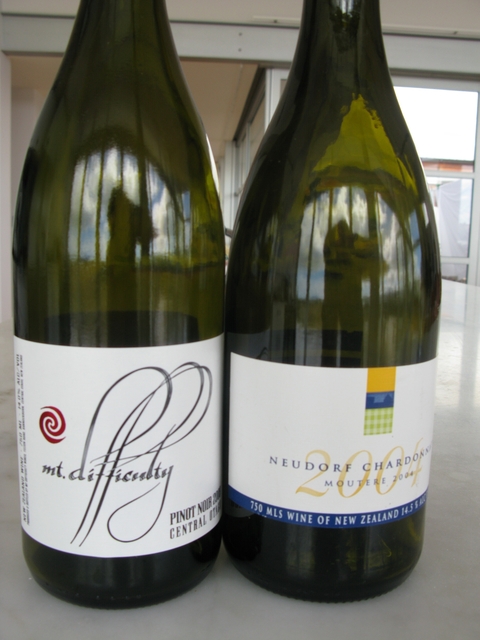
I cooked for some star visitors this weekend. A respected radio broadcaster, and an innovative artist, (who has paintings hanging in my hallway), came from Wellington to spend some time and to eat with us. Deciding what to cook is no problem as there’s an abundance of fresh food around. The menu comprised crayfish salad followed by duck. And for our star guests I raided the cellar with what turned out to be excellent wines to match and complement the food.
Neudorf chardonnay has long been a favourite in our house and so the Moutere 2004 was a treat worth waiting six years for. It is a very special wine, made by Nelson region pair Tim and Judy Finn, some of my favourite wine people in NZ. They’re always really welcoming, and their wine is the same. Very approachable, with a little mineral acidity that has mellowed as the years pass, and their wonderful chardonnay was just perfect with our crayfish served straight from the pot.
I have always thought duck should be casseroled long and slowly. It simmered away for at least two hours and literally fell off the bone. The Mt Difficulty Pinot Noir 2006 was a superb match. It is a Central Otago label, made from parcels of land around the premium area of Bannockburn, and is rich, velvety and fruity with a lovely dark red hue. The winery was recently named as a five star winery in the Third Great Classification of Pinot Noirs of NZ and so it was really appropriate to serve this up to Wellington star visitors!
Print • ∞ Permalink • Comments

